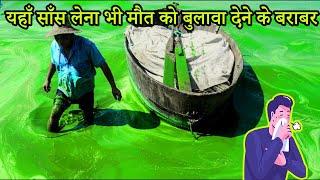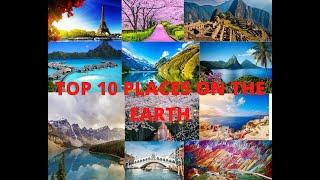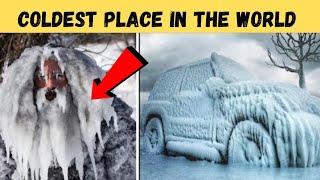10 TOXIC Places On Earth
Description
10 TOXIC places on earth
If you're new, Subscribe! → http://goo.gl/djmfuX
For copyright queries or general inquiries please get in touch: [email protected]
Sources: https://pastebin.com/EdnJdhmX
Top 5 Best is the #1 place for all your heart warming stories about amazing people that will inspire you everyday. Make sure to subscribe and never miss a single video!
#viralstory #amazingpeople #top5best
10 TOXIC places on earth
These days, we literally live in filth. I’m not kidding. If you live in a bustling city, I’m pretty sure you’re
inhaling unseen toxic fumes while you enjoy your morning coffee. But, be thankful that you don’t live in
any of these places we are about to show you, which are 10 of the most toxic places on earth. Number
one surprised me a lot so make sure you watch till the end.
Number 10. The Niger River Delta
The Niger Delta, a fan-shaped area with a landmass of approximately 70,000 km2 is located in the
southern part of Nigeria and consists of 2 rivers, the Benue River and the Niger River that ultimately
drain into the Atlantic
According to a report by Blacksmith Institute and Green Cross, an average of 240,000 barrels of crude oil
are spilled in the Niger River Delta in Nigeria every year. The oil spills have not only contaminated the
delta’s surface and ground water with heavy metal, not the kind that you could rock to, but also the
ambient air and locally grown crops with hydrocarbons, including known carcinogens such as polycyclic
aromatic hydrocarbons. And trust me, you wouldn’t want to breath in any of those substances, much
less eat them with your salad.
These spills gravely affect the environment and the health of the population. A 2013 article published in
the Nigerian Medical Journal, estimated that the widespread pollution could lead to a reduction in
household food security by 60% and a 24% increase of childhood malnutrition.
Number 9. The Matanza Riachuelo
Argentina’s Matanza-Riachuelo River is considered the most important waterway in Buenos Aires.
However, an estimated 15,000 industries are actively releasing waste into the river making it unsuitable
for human habitation. Despite this, about 60% of the approximately 20,000 people living in the area
reside in the most unsuitable conditions, with no sewage system or access to potable water, along the
banks of the river.
Pollutants in the Matanza River vary greatly. A study published in the Latin American Journal of
Sedimentology and Basin Analysis in 2008 revealed that soil on the banks of the river contained levels of
zinc, lead, copper, nickel, and total chromium that were all above recommended levels.
A study in 2013 revealed that 80% of the wells near the river basin are unsafe for drinking. This is due to
high contamination levels heavy metals which leads to gastrointestinal diseases, respiratory diseases,
and cancer among others.
Number 8. Kalimantan, Indonesia
Gold is a very precious metal which is often related to riches and luxury. No one really thinks about its
links to one of the most toxic substances on earth.
In Central and South Kalimantan, some 43,000 people make a living as illegal, small-scale gold miners,
and that is exactly the reason why this place is one of the most toxic places on earth. The miners use
mercury in their rudimentary smelting process, releasing as much as 1,000 tons of the toxic chemicals
into the air each year. Worse, many miners smelt inside their homes, where the mercury vapor is
trapped. The metal can also be released into area waterways, where it can accumulate in fish and water.
A 2008 study found concentrations of mercury in the Kahayan River in central Kalimantan of 2,260 ng/L,
more than twice Indonesia’s recommended standard of 1000 ng/L.. In recent years, however, the
Indonesian government has taken steps to limit man-made mercury emissions, working with miners to
make their smelting process safer.
Number 7. Kabwe, Zambia
Kabwe is often considered by pollution experts as the world’s most toxic town, and with good reason.
This is a place where mass lead poisoning has almost certainly damaged the brains and other organs of
generations of children – and where children continue to be poisoned every day.
Lead blood concentrations in Kabwe have been found at levels 60% higher than the amount considered
fatal and the biggest victims are the children, whose brains and other organs are particularly sensitive. In
a recent study conducted by a team of researchers from Zambia and Japan, all 246 children tested were
above the safety limit of 5 micrograms per deciliter of blood. The vast majority was over 45 micrograms
per deciliter, which causes brain, liver and hearing damage, and eight of them were over 150
micrograms per deciliter, at which point death is the most likely outcome.





















Comments